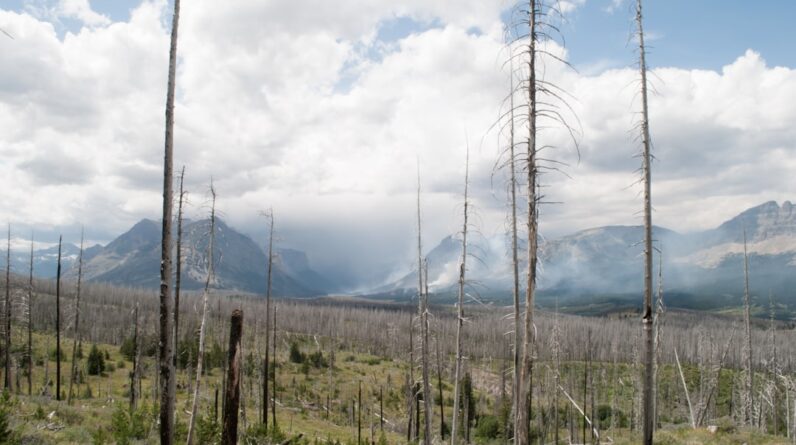
Reforestation plays a crucial role in the survival and health of pollinator populations, which are essential for the reproduction of many flowering plants. As you may know, pollinators such as bees, butterflies, and birds are responsible for the fertilization of a significant portion of the world’s crops and wild plants. Without their diligent work, many ecosystems would struggle to thrive, leading to a decline in biodiversity and food production.
By restoring forests, you create a more hospitable environment for these vital creatures, ensuring that they have the resources they need to flourish. Moreover, reforestation helps to combat the alarming decline in pollinator populations caused by habitat loss, pesticide use, and climate change. When you engage in reforestation efforts, you are not only planting trees but also creating a network of habitats that support various species.
This interconnectedness is vital for maintaining healthy ecosystems. By prioritizing reforestation, you contribute to a more sustainable future where pollinators can thrive, ultimately benefiting both natural ecosystems and agricultural systems.
Key Takeaways
- Reforestation is crucial for the survival of pollinators, which play a key role in the ecosystem and food production.
- Reforestation provides essential habitat for pollinators, offering them a place to nest, forage, and thrive.
- Reforestation supports plant diversity by creating a suitable environment for a variety of plant species to grow and flourish.
- Reforestation has a significant impact on ecosystem restoration, helping to restore balance and health to damaged ecosystems.
- Reforestation plays a vital role in climate change mitigation by sequestering carbon and reducing greenhouse gas emissions.
How Reforestation Provides Habitat for Pollinators
When you think about reforestation, consider how it serves as a sanctuary for pollinators. Forests provide essential habitats that offer food sources, nesting sites, and protection from predators. As you plant trees and restore degraded areas, you create a diverse landscape that attracts various pollinator species.
The flowers that bloom in these newly established forests provide nectar and pollen, which are critical for the survival of bees and other insects. This abundance of resources fosters a thriving ecosystem where pollinators can thrive. In addition to providing food, reforested areas offer shelter and nesting opportunities for pollinators.
Many species require specific types of plants or structures to reproduce successfully. By planting a variety of tree species and understory plants, you create a mosaic of habitats that cater to different pollinator needs. This diversity not only supports existing populations but also encourages the return of species that may have previously been lost due to habitat destruction.
Your efforts in reforestation can lead to a resurgence of pollinator populations, which is vital for maintaining ecological balance.
The Role of Reforestation in Supporting Plant Diversity

Reforestation is instrumental in promoting plant diversity, which is essential for healthy ecosystems. When you restore forests, you are not just planting trees; you are also creating an environment where various plant species can thrive. This diversity is crucial because it enhances ecosystem resilience, allowing it to withstand environmental changes and disturbances.
By fostering a rich tapestry of plant life, you contribute to the overall health of the ecosystem. Furthermore, diverse plant communities support a wide range of pollinators and other wildlife. When you engage in reforestation, consider planting native species that are well-adapted to the local environment.
These plants often have co-evolved relationships with local pollinators, ensuring that both plants and animals can thrive together. By prioritizing plant diversity in your reforestation efforts, you create a more robust ecosystem that can better withstand challenges such as climate change and invasive species.
The Impact of Reforestation on Ecosystem Restoration
Reforestation is a powerful tool for ecosystem restoration, helping to revive degraded landscapes and restore ecological balance. When you participate in reforestation projects, you actively contribute to the recovery of ecosystems that have been damaged by deforestation, urbanization, or agricultural practices. This restoration process is vital for revitalizing soil health, improving water quality, and enhancing biodiversity.
As you restore forests through reforestation, you also help to stabilize local climates and mitigate the effects of extreme weather events. Healthy forests act as natural buffers against floods and droughts, protecting both human communities and wildlife habitats. By investing your time and resources into reforestation efforts, you play a significant role in healing the planet and ensuring that ecosystems can recover from past damage.
The Connection Between Reforestation and Climate Change Mitigation
Reforestation is an effective strategy for combating climate change by sequestering carbon dioxide from the atmosphere. When you plant trees, they absorb CO2 during photosynthesis, storing carbon in their biomass and helping to reduce greenhouse gas concentrations. This process is essential for mitigating climate change impacts and promoting a healthier planet for future generations.
Additionally, reforested areas can enhance local climate resilience by regulating temperature and improving air quality. As you engage in reforestation efforts, consider how these newly planted trees can create microclimates that benefit both wildlife and human communities. By contributing to climate change mitigation through reforestation, you are taking an active role in addressing one of the most pressing challenges facing our world today.
The Benefits of Reforestation for Endangered Plant Species

Reforestation offers significant benefits for endangered plant species that are struggling to survive in fragmented habitats. When you restore forests, you create new opportunities for these vulnerable plants to thrive in a more supportive environment. By planting native species and fostering diverse ecosystems, you help ensure that endangered plants have the resources they need to grow and reproduce.
Moreover, reforested areas can serve as corridors that connect isolated populations of endangered plants. This connectivity is crucial for genetic diversity and resilience against environmental changes. As you participate in reforestation projects aimed at supporting endangered species, you contribute to the preservation of biodiversity and the overall health of ecosystems.
Your efforts can make a tangible difference in the survival of these plants and the ecosystems they inhabit.
The Relationship Between Reforestation and Food Security
Reforestation has a direct impact on food security by enhancing agricultural productivity and supporting sustainable farming practices. When you restore forests, you improve soil health and water retention, which are essential for growing crops. Healthy forests also provide habitat for pollinators that are vital for the fertilization of many fruits and vegetables.
By investing in reforestation efforts, you contribute to a more resilient agricultural system that can better withstand climate variability. Additionally, reforested areas can offer alternative sources of food through the cultivation of non-timber forest products such as fruits, nuts, and medicinal plants. These resources can supplement local diets and provide economic opportunities for communities engaged in sustainable harvesting practices.
By recognizing the connection between reforestation and food security, you can play an active role in promoting sustainable land use practices that benefit both people and the environment.
The Role of Reforestation in Promoting Biodiversity and Ecosystem Resilience
Reforestation is essential for promoting biodiversity and enhancing ecosystem resilience in the face of environmental challenges. When you engage in reforestation efforts, you create habitats that support a wide range of species, from plants to animals. This increased biodiversity is crucial for maintaining ecological balance and ensuring that ecosystems can adapt to changing conditions.
Furthermore, diverse ecosystems are more resilient to disturbances such as pests, diseases, and climate change impacts. By fostering biodiversity through reforestation, you contribute to healthier ecosystems that can recover more quickly from disruptions. Your involvement in these efforts not only benefits wildlife but also enhances the overall health of the planet.
As you consider your role in reforestation initiatives, remember that your actions can have far-reaching effects on biodiversity and ecosystem resilience for generations to come.
If you are interested in learning more about the advantages of planting trees for climate change, check out the article Advantages of Planting Trees for Climate Change. This article delves into the various ways in which reforestation can help combat climate change and its positive impact on the environment. It further emphasizes the importance of planting trees for a sustainable future.
FAQs
What is reforestation?
Reforestation is the process of restoring and replanting forests that have been depleted or destroyed, with the goal of creating a healthy and sustainable ecosystem.
How does reforestation support pollinators?
Reforestation provides a natural habitat for pollinators such as bees, butterflies, and birds. The diverse plant life in a reforested area offers a variety of nectar and pollen sources for these pollinators, helping to support their populations.
How does reforestation support plant life?
Reforestation helps to restore the balance of plant life by reintroducing native tree and plant species. This creates a more diverse and resilient ecosystem, providing food and shelter for a wide range of plant species.
What are the benefits of reforestation for the environment?
Reforestation helps to mitigate climate change by absorbing carbon dioxide from the atmosphere. It also helps to prevent soil erosion, improve water quality, and provide habitat for a variety of wildlife.
How can individuals support reforestation efforts?
Individuals can support reforestation efforts by participating in tree planting initiatives, supporting organizations that focus on reforestation, and advocating for sustainable land use practices. Additionally, reducing personal carbon footprint can help to mitigate the need for deforestation.





